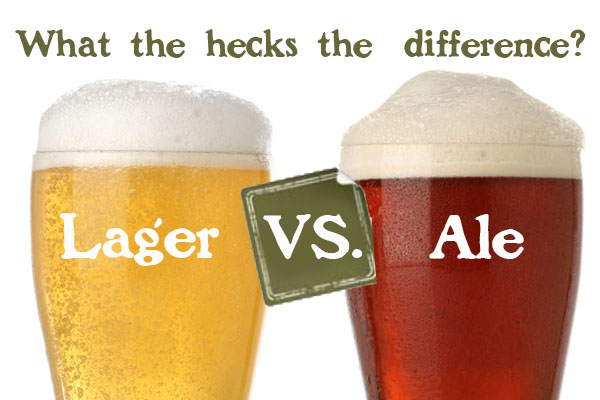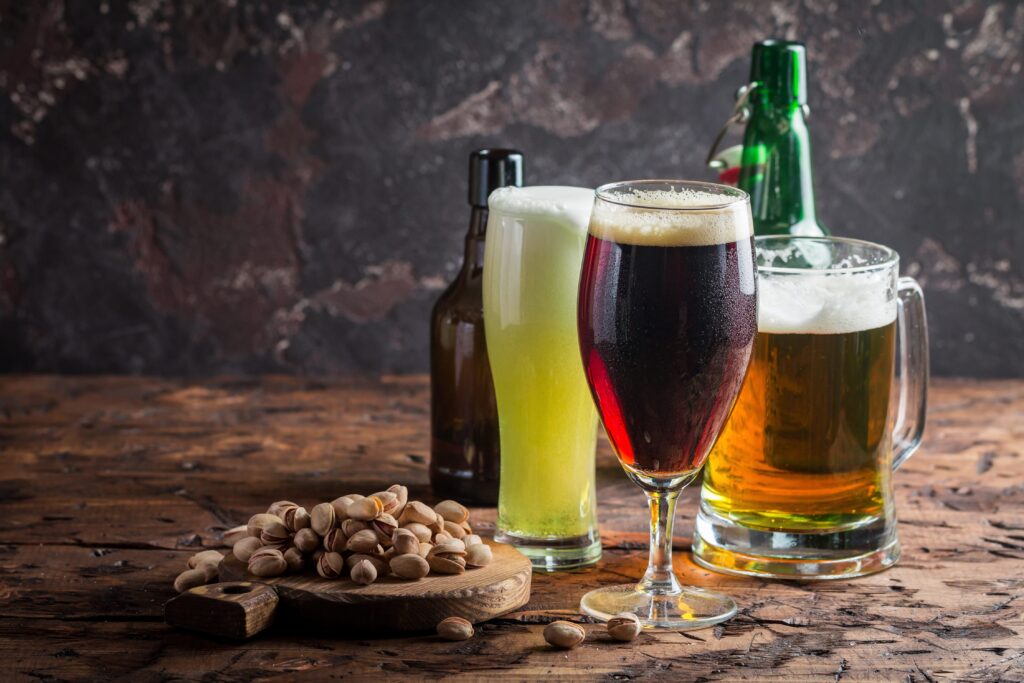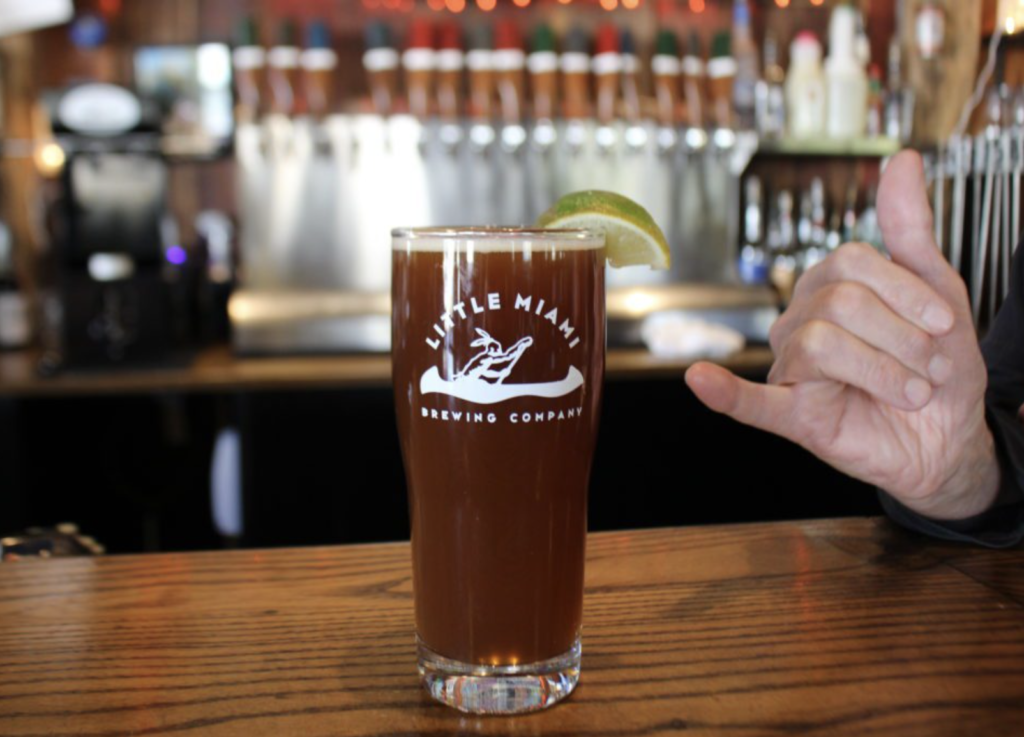If you are a beer lover or a beginner who wants to know how to select a beer that would suit your preference, well you are in the right place! This blog will introduce you to the history of beers, its brewing process and the type of beers you might like to check out. And who knows you might end up finding your favorite type through this guide!
Beer’s Beginnings: A Sudsy Trip Through Time

Beer appeared in history much earlier than one might expect. It is regarded to be one of the oldest beverages consumed by humans and is said to have been present in historic cultures dating back thousands of years, including those of the Sumerians and Egyptians. These early beers were quite different from what we drink today—they were thick, unfiltered, and often drunk with straws to avoid the grainy sediments.
Over time, as different cultures influenced one another, the art of brewing beer evolved significantly. During the Middle Ages, monasteries became the epicenters of beer production, where monks refined and advanced brewing techniques, laying the foundation for many of the methods still in use today. In modern times, beer consumption has become a widely spread tradition and beer now is produced in enormous amounts and varieties. It ranges from conventional ales and lagers to other novelties like craft beers with unusual flavors and ingredients.
How Beer Gets Its Buzz: A look through the brewing basics
Ever wondered what makes your beer taste so good? Let’s dive into the basics of brewing to uncover the simple ingredients and processes that create your favorite beverage.
Beer is varied. At its core, beer is made from four fundamental ingredients which are water, malt, hops and yeast. They all play an important role in the brewing process and can considerably affect the flavor of a pint as well as its smell and appearance.
Water: Good quality water plays an important role as its mineral contents can influence the primary fermentation and the taste of beer.
Malt: Malted barley is the most popular type of grain used and supplies the sugars for fermentation which affects the beer’s color and sweetness.
Hops: Hops are small, green flowers that contribute to both the bitter taste and other mineral-based aromas. It also gives the beer a residual sweetness of malt ranging from musk, earthy, herbal and floral.
Yeast: Yeast plays a critical role in fermentation. Here, sugars are oxidized into alcohol and carbon dioxide. Yeast can be dry or fresh or other chosen subtype and provides specific flavor profiles like fruity and spicy.
Brewing beer is truly an art form, where each step in the process contributes to the final product’s unique character. It begins with mashing malt to extract fermentable sugars, followed by boiling the mixture with hops to impart bitterness and aroma. Fermentation with carefully selected yeast then transforms the sugars into alcohol, while conditioning refines the beer, enhancing its flavors and aroma. The harmony of these ingredients and techniques creates the distinct, flavorful experience that beer enthusiasts cherish.
The Bubbling Rivalry: Ales or Lagers?

Ales and Lagers are the most popular types of beer. The main difference between them, well, is in their process of fermentation.
Ales: Ales are brewed with top-fermenting yeast at high temperatures that give them a rich flavor. These include pale ales, IPAs, stouts and the porters.
Lagers: Lagers on the other hand are brewed at lower temperatures and with bottom-fermenting yeast, often giving them a crispier taste. The most important among them are pale lager beers, pilsners and amber beers.
Types of Ales
Ales can have different variants with different character traits.
Pale Ale: Light and not too bitter, Pale ales are often the gateway for many people into the world of craft beer.
India Pale Ale: IPAs have gained popularity among beer lovers because of its intense taste, bitterness and hop aromas. To know more about this variety, click here.
Stout: Stouts are thick, heavy beers with higher alcohol content. They often feature deep flavors of coffee, chocolate, or roasted malt, making them a popular choice for those who enjoy bold, robust brews.
Porter: Porters are closely related to stouts but are usually less heavy in terms of their body. Porters are characterized by their roasted malt flavor which includes a hint of sweetness.
Wheat Beer: This type of beer is produced with emphasis on wheat and usually has a cloudy appearance and a low feel on the palate.
Belgian Ales: Belgian Ales are characterized by their fruity and spicy yeast flavor and are available from light and sparkling to dark and heavy.
Types of Lagers
Lagers are beers brewed at lower temperatures and are known for their crispy and clean finish and refreshing taste. They are lighter in body and can range from pale to dark.
Pale Lager: Light, medium bodied and clear, pale lagers are known for their refreshing and approachable nature, and are one of the most widely brewed and consumed beers globally.
Pilsner: Pilsners are generally pale golden in color and are a type of pale lagers with a strong hop flavor. They are light, refreshing and fragrant.
Amber Lager: This type of lager comes with a slightly rich maltiness than a pale lager. Amber lagers are beers which are reasonably sweet while having hints of bitterness as well.
Dark Lager: Some lager beers are darker in color than others due to the use of darker malts and have a slightly richer, roasted taste and suit those who want to choose a more full-bodied beer.
Specialty and Hybrid Beers
Speciality beers are just beers that are brewed using different and unusual ingredients like chocolate, honey or other products that a brewery might want to include to create different and out of the box flavors. Hybrid beers on the other hand result when brewers combine a variety of brewing techniques with different types of yeast or involve a combination of brewing both ales and lagers.
Sour Beers: These beers are sour in taste but can also be fruity. They are brewed using wild yeast strains or bacteria.
Fruit Beers: This type of beer incorporates fruits at the time of brewing to come up with a satisfactory beer taste with intensity of flavors which can be as light as a fruity sweetness to more complex flavors.
Spiced and Herbal Beers: They are made with spices and herbs and other botanical ingredients are also used in developing them so they have rich and exotic aromas.
Hybrid Beers: Hybrid beers are beers made with combination brewing like halfway between ales and lagers.
Seasonal Beers
These beers use ingredients of the main passing season and can range from light fruity flavors of tropical fruits to dense and warm taste of pumpkins in fall and winter.
Spring and Summer: Warm weather asks for light beers like witbiers, pale ale, or fruity sours.
Fall and Winter: Cold weather means richer, spiced beers such as amber ales and stouts.
The Rising Popularity of Craft Beers
Craft beers have brought a wave of innovation and creativity to the brewing industry, transforming the way we experience beer. Unlike standard beers, craft beers are brewed with a focus on quality, unique flavors, and diverse brewing techniques. This shift has led to an explosion of craft breweries, each offering their own twist on traditional styles. At Little Miami Brewing Company, we take pride in our extensive range of craft beers, from bold hoppy IPAs to smooth, velvety stouts, ensuring there’s something for every beer enthusiast.

The Right Beer for You
The main areas of thought while choosing a beer should be a mix of flavor, base and aromas that one enjoys and can get used to.
Flavor Preferences: Different people have different flavor preferences. Some might favor lighter, fruity tones that offer a refreshing taste, while others might prefer rich, dense flavors that provide a more robust experience. Your individual taste profile plays a crucial role in determining which flavors you enjoy most.
Beer Pairings: One might choose a beer according to the food they enjoy, for instance, an IPA beer is perfect with spicy foods and a stout beer is perfect with chocolate products.
Many beer enthusiasts are moving beyond traditional brews, driven by a curiosity to experience new styles like seasonal specials or other innovative, non-traditional beers. These unique offerings often showcase creative brewing techniques and unconventional ingredients, providing an exciting departure from the usual beer varieties. With craft breweries experimenting more than ever, beer lovers now have a wealth of options that push the boundaries of flavor and tradition, allowing them to discover fresh and unexpected profiles in their drinking experience. This growing trend highlights a broader shift towards embracing diversity and creativity in the beer industry.
Top Varieties offered at the Little Miami Brewing Company
River Dog: A sour and tart beer with hints of blueberries. It forms a beautiful balance of tart and sweet.
Earth Cookie Brown Ale: With a velvety smooth taste, this beer has notes of chocolate and a touch of caramel.

Y’all Be Easy: This beer is a dark Mexican lager, smooth and rich and with a dense taste.
Exploring the journey of beer from its ancient origins to today’s vibrant craft beer culture is not just fascinating—it’s an adventure for the taste buds. No matter your beer preference or flavor profile, Little Miami Brewing Company has a diverse range of offerings to satisfy every palate. Whether you’re drawn to classic styles or eager to try something new, there’s always something exceptional waiting for you at Little Miami Brewing Company.
So if you have not visited our friendly neighborhood brewery yet, make today the day you stop by and experience what we’re all about!
To know more, click here.




